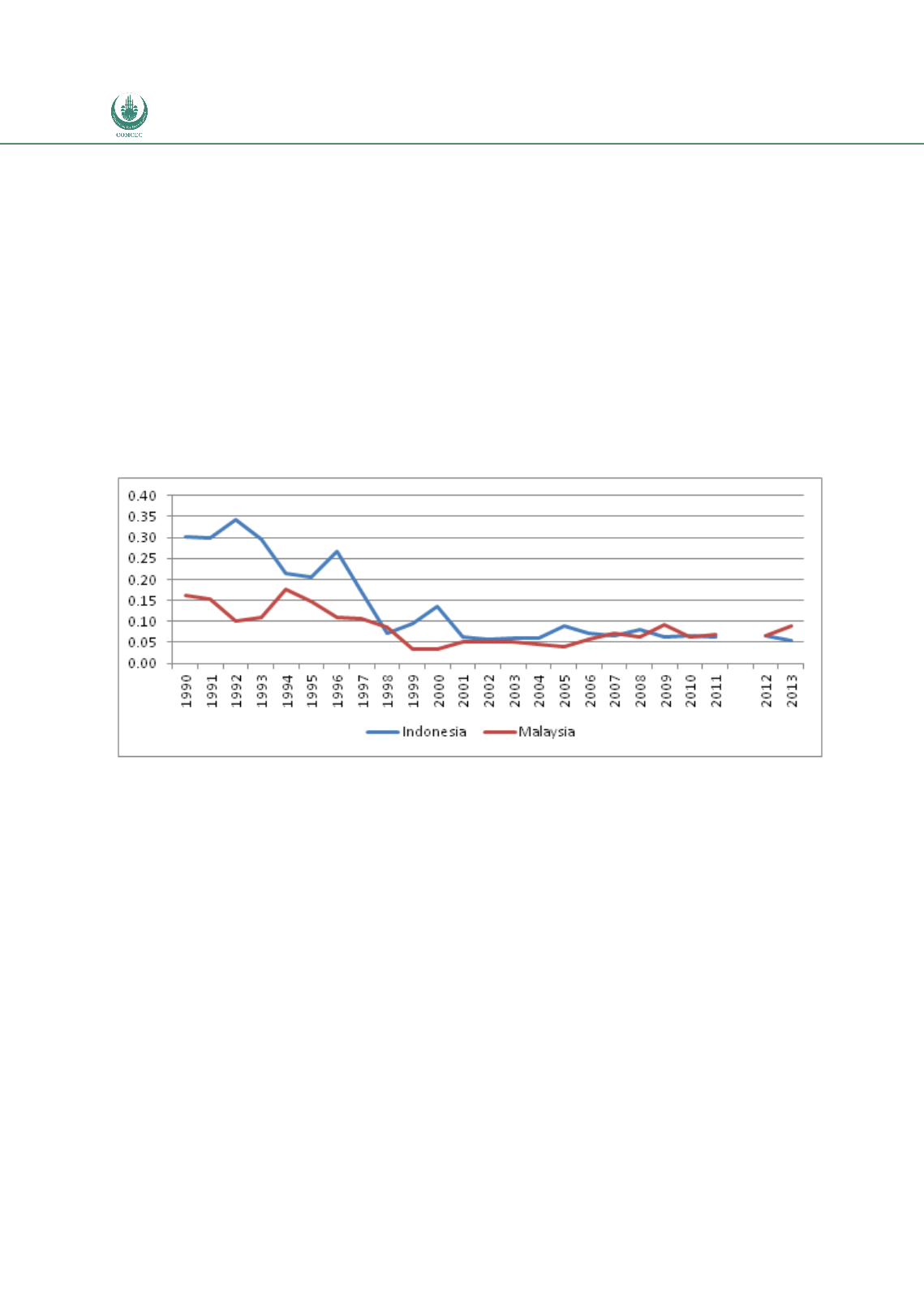

Preferential Trade Agreements and Trade Liberalization Efforts in the OIC Member States
With Special Emphasis on the TPS-OIC
108
1995 when two product groups: animal and vegetable fats and oils and wood and articles of
wood (HS44) accounted for two thirds of exports to China. Increasing diversification of exports
to China is clearly visible in Figure 28 below. In the case of Indonesia main 2012 ex- ports
included mineral fuels (HS27) 37.5%, animal and vegetable fats and oils (HS15) 19.3% and
ores, slag and ash (HS26) 11.2%. Again, compared to the situation in 1990s Indonesian exports
to China have become much more diversified. Brunei Darussalam mainly exports oil to China.
All three countries mainly import electrical and electronic equipment (HS85), nuclear reactors,
boilers machinery (HS84), iron and steel (HS72) and articles of iron and steel (HS73).
Diversification of products imported from China is yet higher than in the case of exports to
China.
Figure 28: Index of Concentration of Indonesian and Malaysian Exports to China (higher values
indicate more concentrated exports / imports), 1990-2013
Source: calculations based on Comtrade data
Yang and Martinez-Zarzoso (2013) estimate that the ASEAN-China agreement created trade
both within the bloc and with external partners. At the sectoral level significant export effects
are found for manufactured goods and chemical products, while the results for agricultural
raw materials, as well as machinery and transport equipment, are not significant. A range of
other studies using different empirical specifications find mixed results. For instance Supriana
(2013) finds positive and significant impact on export creation for Malaysia, but no significant
impact on Indonesia (Brunei Darussalam is not analysed). Okabe and Urata (2013) analyse
trade patterns between ASEAN and China. They note that ASEAN exports of parts and
components and capital goods have partly re-oriented from ASEAN towards China. This
indicates emergence of regional production networks in the ASEAN-China region.
The Trade in Services Agreement entered into force in mid-2007, but its commitments do not
go much beyond re-iterating GATS commitments (Table 17). China’s original WTO
commitments are to open to ASEAN 26 branches in 5 service areas: construction,

















